#Chelsea’s Pipe Fountain by Mark Menin
Explore tagged Tumblr posts
Text

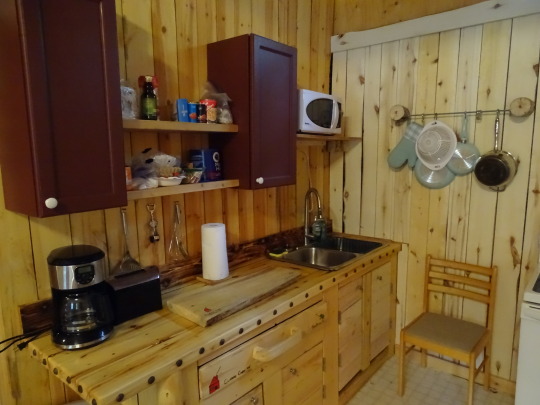
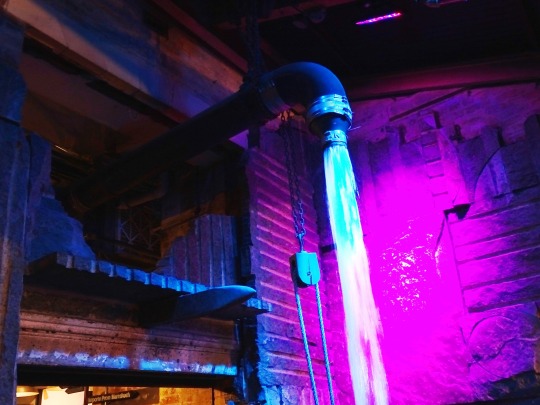

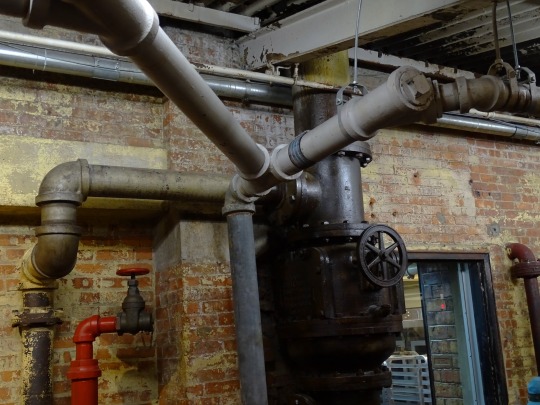
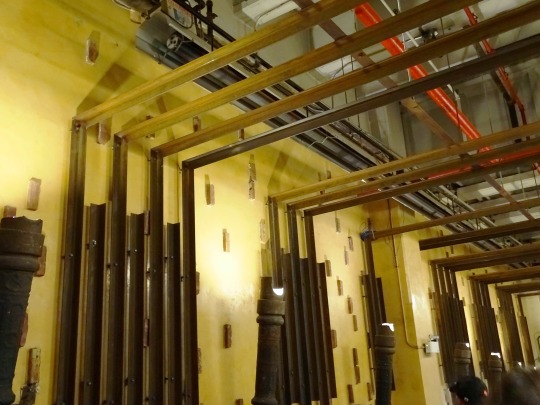




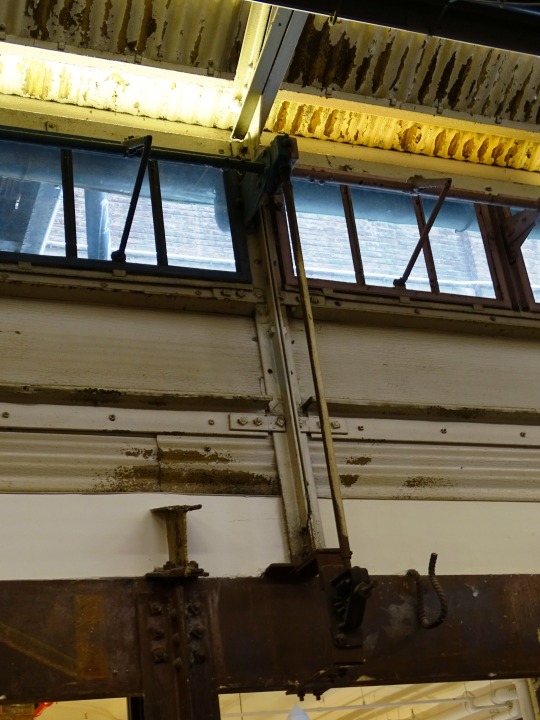
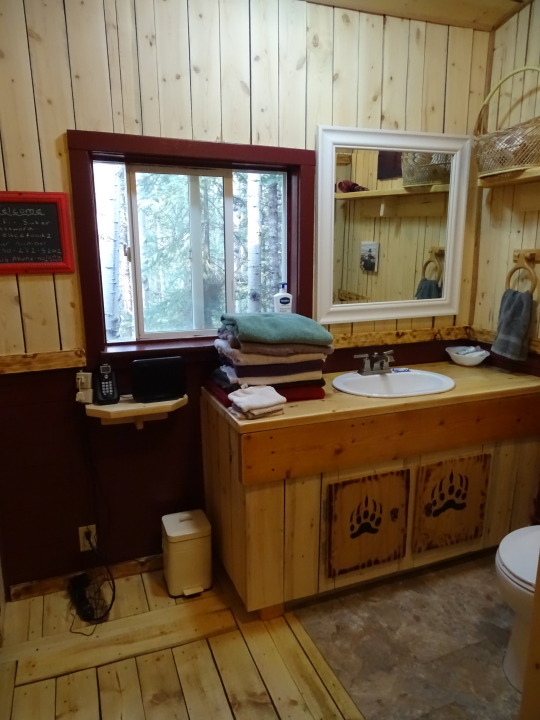
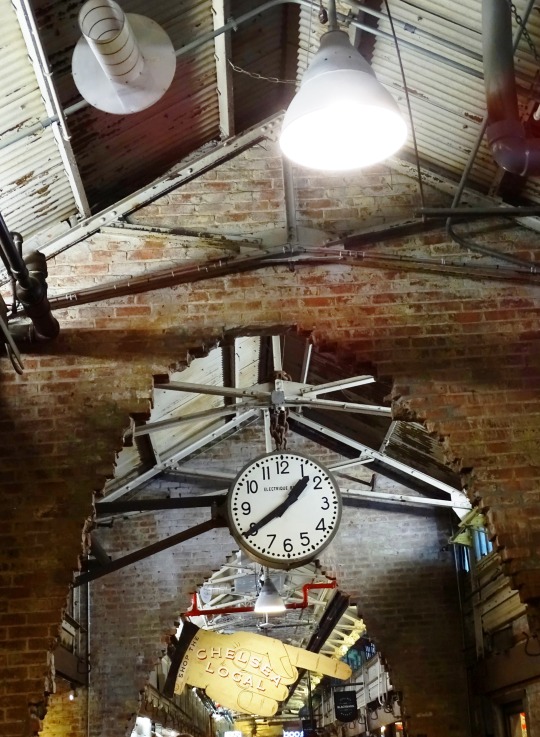
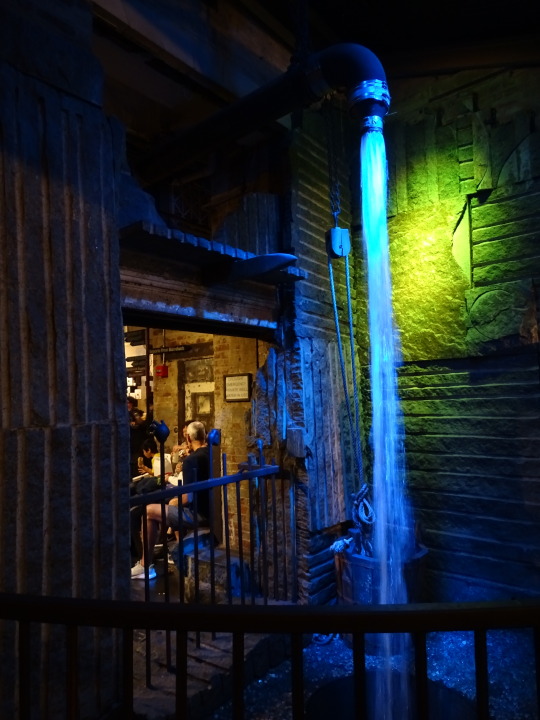

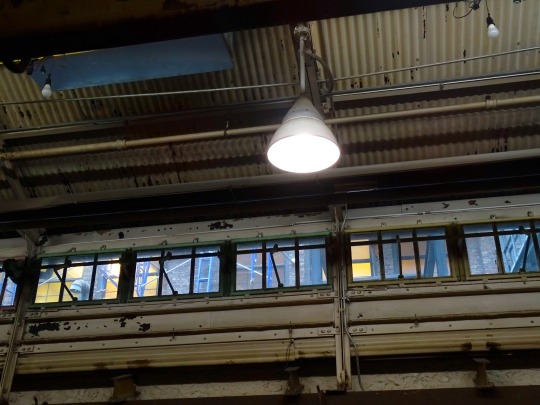
World Plumbing Day
World Plumbing Day is an international event, initiated by the World Plumbing Council, held on 11 March each year to recognize the important role plumbing plays in societal health and amenity.
The WPC, through its member countries and its partnerships with bodies like the World Health Organisation, works all year round to promote the benefits of safe plumbing, but in 2010 it decided to launch the concept of embedding a single day on the world’s calendar dedicated to plumbing.
History of World Plumbing Day
The idea was that on March 11 each year people all over the world would pause to reflect on the vital role plumbing plays in preserving their health and way of life – in the case of countries like ours – or in building sustainable disease-free futures for millions in the developing world. And so World Plumbing Day was born, and it is big and getting bigger all the time.
Today, on the continents of Australia, Europe, and Africa events are organized to mark the occasion and draw attention to the importance of good plumbing and sanitation. In China, England, Germany, India, Canada, North, and South America and many more places industry leaders – like us here today – governments, policymakers, and community-based organizations are promoting World Plumbing Day.
How to celebrate World Plumbing Day
Right now, today, in offices and training colleges, on worksites and in classrooms, and in legislatures and Parliaments around the world, World Plumbing Day is being marked and recognized. In media releases and magazine articles in Chinese, Hindi, English, German and Spanish the message about the link between good plumbing sanitation and human and environmental health is reaching millions of people each March.
World Plumbing Day: Encouraging Health Through Plumbing
World Plumbing Day recognizes the critical link between health and plumbing facilities. Indeed, the bathroom plays a significant role in maintaining our health all around the world. Everybody understands the role of sanitized, plumbing solutions to cut germs in their paths.
Just how many germs live in your bathroom is unclear, but it’s the place where you can find some of the most harmful bacteria, such as bacillus, gram-negative rods, cocci, and gram-positive rods. These different bacteria types are harmful to the human population and can cause a variety of health concerns such, skin infections and pneumonia. Some types are also resistant to antibiotics, which brings a completely new meaning to World Plumbing Day.
Indeed, good plumbing is not just a nice thing to have to keep your bathroom looking pretty. It’s the safest and quickest way to maintain and protect your health.
Supporting initiatives to develop plumbing on World Plumbing Day
Let’s be honest. Not everybody has access to the same plumbing system. Populations in developing countries don’t always have toilets or even running water. While it’s making us appreciate our bathrooms a lot more, on World Plumbing Day, you can actively decide to share your plumbing with others. No, it doesn’t mean inviting people to see your bathroom.
But you can have a look for organizations that help to bring modern plumbing facilities to some of the most impoverished areas on the planet. Toilet twinning charities can make a massive difference to the health of individuals around the world. You can donate to a charity that helps to build toilets in developing areas. Additionally, you can find organizations such as Who Gives A Crap that sell recycled toilet paper and repurpose 50% of their profits to build toilets.
Introducing healthy bathroom habits on World Plumbing Day
There’s a reason why your parents taught you to wash your hands after going to the bathroom. It ensures that you can wash potentially harmful bacteria away. Did you know that if everybody washed their hands after a toilet break, the risk of catching diseases would be almost non-existent? Not that we catch diseases only in the bathroom, but most of our usual stomach bugs, flu, and other infectious viruses could be contained with proper hand washing techniques!
That sounds interesting, doesn’t it? Make hygiene your top priority on World Plumbing Day. You can teach your kids always to wash their hands. Besides, you can also introduce a bathroom routine to keep everything as clean as possible. Changing your hand towel every week is a no-brainer. But also remember to keep your apparent plumbing clean to avoid any contamination! Nobody likes mold patches in the shower!
Supporting your local workers on World Plumbing Day
Plumbers have a huge responsibility when it comes to health. On World Plumbing Day, celebrating your local plumbing expert is the best way to spend the day. No, it doesn’t mean throwing them a party! But you can steer away from harmful DIY practices that end up being a false economy. DIY repair jobs at home can turn against you if you don’t know what you’re doing.
So if the toilet gets blocked regularly or if you notice that your pipes are wet to the touch, it’s best to get in touch with a professional plumber. Plumbing knowledge protects your home hygiene. You could damage your pipe or plumbing system, while a plumber can identify the issue and fix it while keeping your system safe.
Appreciating modern facilities on World Plumbing Day
Taking care of your plumbing is part of your maintenance duty as a homeowner. Plumbing is not often high on our list of priorities, especially when everything works. But, on World Plumbing Day, you can start a new habit to keep your plumbing system working for as long as possible. Learning some of the quick fixes for everyday plumbing challenges can help you look after your pipes. Regular maintenance is necessary.
Why not take the time to get your pipes checked for potential clog risks and condition assessment by a professional plumber? You can also include sewer inspection to avoid bad surprises when your sewer pipes suddenly clog up! Additionally, you can banish harmful chemicals that are too aggressive on the pipes. Instead, use filters to capture potential obstructions such as hair before they enter the system. You can also add a water softener solution to reduce issues that can develop as a result of prolonged exposure to hard water. Keeping your pipes clean and free of obstacles keep your bathroom safe!
Source
#log cabin#Chelsea’s Pipe Fountain by Mark Menin#Chelsea Market#Manhattan#tracks#Le Saint Pierre Auberge Distinctive#World Plumbing Day#architecture#interior#hotel room#Quebec City#Québec#Canada#summer 2018#2015#vacation#original photography#tourist attraction#landmark#New York City#travel#WorldPlumbingDay#11 March#tv#basse ville#lower town#international day#USA
0 notes
Photo



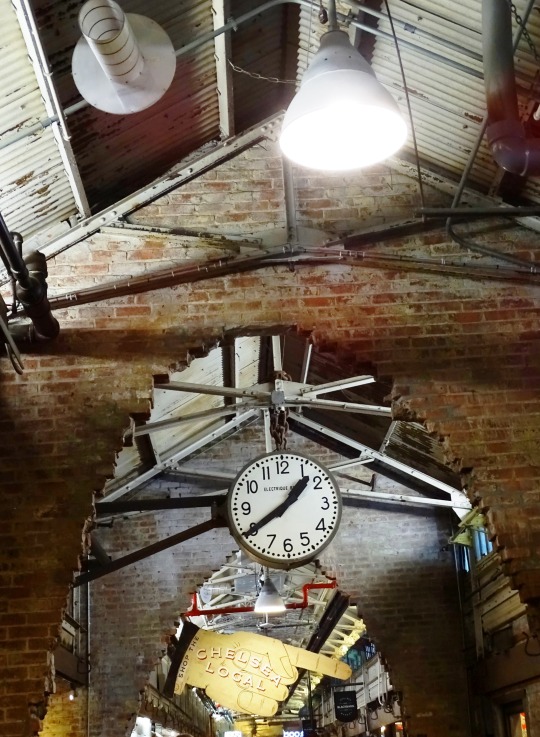
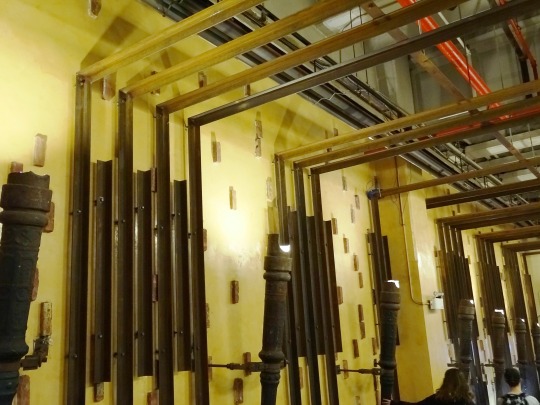


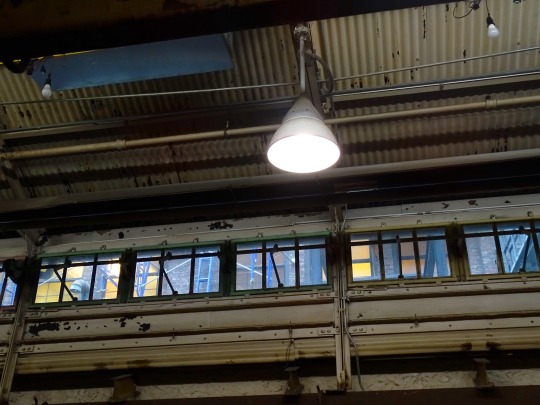


World Plumbing Day
World Plumbing Day is an international event, initiated by the World Plumbing Council, held on 11 March each year to recognize the important role plumbing plays in societal health and amenity.
The WPC, through its member countries and its partnerships with bodies like the World Health Organisation, works all year round to promote the benefits of safe plumbing, but in 2010 it decided to launch the concept of embedding a single day on the world’s calendar dedicated to plumbing.
History of World Plumbing Day
The idea was that on March 11 each year people all over the world would pause to reflect on the vital role plumbing plays in preserving their health and way of life – in the case of countries like ours – or in building sustainable disease-free futures for millions in the developing world. And so World Plumbing Day was born, and it is big and getting bigger all the time.
Today, on the continents of Australia, Europe, and Africa events are organized to mark the occasion and draw attention to the importance of good plumbing and sanitation. In China, England, Germany, India, Canada, North, and South America and many more places industry leaders – like us here today – governments, policymakers, and community-based organizations are promoting World Plumbing Day.
How to celebrate World Plumbing Day
Right now, today, in offices and training colleges, on worksites and in classrooms, and in legislatures and Parliaments around the world, World Plumbing Day is being marked and recognized. In media releases and magazine articles in Chinese, Hindi, English, German and Spanish the message about the link between good plumbing sanitation and human and environmental health is reaching millions of people each March.
World Plumbing Day: Encouraging Health Through Plumbing
World Plumbing Day recognizes the critical link between health and plumbing facilities. Indeed, the bathroom plays a significant role in maintaining our health all around the world. Everybody understands the role of sanitized, plumbing solutions to cut germs in their paths.
Just how many germs live in your bathroom is unclear, but it’s the place where you can find some of the most harmful bacteria, such as bacillus, gram-negative rods, cocci, and gram-positive rods. These different bacteria types are harmful to the human population and can cause a variety of health concerns such, skin infections and pneumonia. Some types are also resistant to antibiotics, which brings a completely new meaning to World Plumbing Day.
Indeed, good plumbing is not just a nice thing to have to keep your bathroom looking pretty. It’s the safest and quickest way to maintain and protect your health.
Supporting initiatives to develop plumbing on World Plumbing Day
Let’s be honest. Not everybody has access to the same plumbing system. Populations in developing countries don’t always have toilets or even running water. While it’s making us appreciate our bathrooms a lot more, on World Plumbing Day, you can actively decide to share your plumbing with others. No, it doesn’t mean inviting people to see your bathroom.
But you can have a look for organizations that help to bring modern plumbing facilities to some of the most impoverished areas on the planet. Toilet twinning charities can make a massive difference to the health of individuals around the world. You can donate to a charity that helps to build toilets in developing areas. Additionally, you can find organizations such as Who Gives A Crap that sell recycled toilet paper and repurpose 50% of their profits to build toilets.
Introducing healthy bathroom habits on World Plumbing Day
There’s a reason why your parents taught you to wash your hands after going to the bathroom. It ensures that you can wash potentially harmful bacteria away. Did you know that if everybody washed their hands after a toilet break, the risk of catching diseases would be almost non-existent? Not that we catch diseases only in the bathroom, but most of our usual stomach bugs, flu, and other infectious viruses could be contained with proper hand washing techniques!
That sounds interesting, doesn’t it? Make hygiene your top priority on World Plumbing Day. You can teach your kids always to wash their hands. Besides, you can also introduce a bathroom routine to keep everything as clean as possible. Changing your hand towel every week is a no-brainer. But also remember to keep your apparent plumbing clean to avoid any contamination! Nobody likes mold patches in the shower!
Supporting your local workers on World Plumbing Day
Plumbers have a huge responsibility when it comes to health. On World Plumbing Day, celebrating your local plumbing expert is the best way to spend the day. No, it doesn’t mean throwing them a party! But you can steer away from harmful DIY practices that end up being a false economy. DIY repair jobs at home can turn against you if you don’t know what you’re doing.
So if the toilet gets blocked regularly or if you notice that your pipes are wet to the touch, it’s best to get in touch with a professional plumber. Plumbing knowledge protects your home hygiene. You could damage your pipe or plumbing system, while a plumber can identify the issue and fix it while keeping your system safe.
Appreciating modern facilities on World Plumbing Day
Taking care of your plumbing is part of your maintenance duty as a homeowner. Plumbing is not often high on our list of priorities, especially when everything works. But, on World Plumbing Day, you can start a new habit to keep your plumbing system working for as long as possible. Learning some of the quick fixes for everyday plumbing challenges can help you look after your pipes. Regular maintenance is necessary.
Why not take the time to get your pipes checked for potential clog risks and condition assessment by a professional plumber? You can also include sewer inspection to avoid bad surprises when your sewer pipes suddenly clog up! Additionally, you can banish harmful chemicals that are too aggressive on the pipes. Instead, use filters to capture potential obstructions such as hair before they enter the system. You can also add a water softener solution to reduce issues that can develop as a result of prolonged exposure to hard water. Keeping your pipes clean and free of obstacles keep your bathroom safe!
Source
#Chelsea’s Pipe Fountain by Mark Menin#Chelsea Market#Manhattan#tracks#Le Saint Pierre Auberge Distinctive#World Plumbing Day#architecture#interior#hotel room#Quebec City#Québec#Canada#summer 2018#2015#vacation#original photography#tourist attraction#landmark#New York City#travel#WorldPlumbingDay#11 March#tv#basse ville#lower town#international day#USA
0 notes
Photo










Chelsea Market, Manhattan (No. 1)
Chelsea Market is a food hall, shopping mall, office building and television production facility located in the Chelsea neighborhood of the borough of Manhattan, in New York City. The Chelsea Market complex occupies an entire city block with a connecting bridge over Tenth Avenue to the adjacent 85 Tenth Avenue building. The High Line passes through the 10th Avenue side of the building.
Chelsea Market was constructed in the 1890s and was originally the site of the National Biscuit Company (Nabisco) factory complex where the Oreo cookie was invented and produced. The complex was redeveloped in the 1990s and features a retail concourse at ground level with office space above. Chelsea Market is currently owned by Alphabet Inc., parent company of Google. Chelsea Market lies within the "Gansevoort Market Historic District", which is recognized by New York State and National Register of Historic Places.
The Chelsea Market complex fills an entire city block bounded by Ninth and Tenth Avenues and 15th and 16th Streets, with a connecting bridge over Tenth Avenue to the adjacent 85 Tenth Avenue building, which was also part of the Nabisco complex but is now separately owned. In addition to the retail concourse, it also provides standard office space for tenants, including media and broadcasting companies such as Oxygen Network, Food Network, MLB.com, BAMTech, EMI Music Publishing and the local New York City cable station NY1. More recently, Google has moved into some of the second, third, fourth, seventh, and eighth floors along with its subsidiary YouTube on the fifth.
Retail facilities were introduced into the building by connecting the original back lots of individual buildings to a central, ground-level concourse with entries at 9th and 10th Avenues (completed in April 1997). Anchor stores include Pearl River Mart, the Chelsea Market Baskets, Posman Books, Sarabeth's Bakery, Manhattan Fruit Exchange, BuonItalia, Anthropologie, and the Buddakan restaurant. There is also Miznon, the Fat Witch Bakery, Amy's Bread, Ruth's Bakery, Chelsea Wine Vault, Eleni's Bakery, Ninth Street Espresso, The Lobster Place, Dickson's Farmstand, The Green Table, Chelsea Thai and Friedman's Lunch, an Italian fresh pasta restaurant called Giovanni Rana Pastificio e Cucina, as well as a variety of smaller stores selling cheese, artisanal salt and olive oil, chocolate and flowers. In November 2015 Davidovich Bakery announced the opening of a Davidovich Bagels location at the Chelsea Market.
In January 2006 Morimoto, owned by Food Network "Iron Chef" Masaharu Morimoto and designed by Japanese architect Tadao Ando, opened on the 10th Avenue side. The Food Network used to film its shows Iron Chef America and Emeril Live in the Chelsea Market complex.
The developers of Chelsea Market encourage a symbiotic relationship among their tenants with the vendors supplying the restaurateurs with fresh ingredients, such as seafood, vegetables, fruit and meats. Chelsea Market brings diverse tenants, businesses, and vendors together that encourage tenants to foster community and cultivate business support among one another. The presence of television companies in the same building also brings media attention to the site and the businesses that are found there. The site also allows businesses to combine their manufacturing and retail assets under one roof.
The High Line, which opened in the spring of 2009, passes through the building's Tenth Avenue side. This abandoned, elevated railroad track has been converted to an urban oasis or greenway, which now forms a continuous route between the Javits Center and the Meatpacking District.
Source: Wikipedia
#Chelsea Market#architecture#interior#exterior#travel#vacation#USA#Manhattan#New York City#Nabisco Factory#industrial look#landmark#Chelsea’s Pipe Fountain by Mark Menin#tourist attraction#summer 2018#self-supporting catenary arch#lamp#clock#original photography#indoors#sign#water#Northeastern USA#cityscape
9 notes
·
View notes
Photo










Public Art, New York City (No. 7)
Bethesda Fountain
In their 1858 Greensward Plan for Central Park, Frederick Law Olmsted (1822-1903) and Calvert Vaux (1824-1895) proposed an architectural “open air hall of reception” for this area. They imagined a sweeping promenade that would lead to a terrace overlooking the lake. As Vaux told Clarence Cook, art critic and reporter for the New York Daily Tribune, they wanted the structure to be subordinate to the landscape: “Nature first, second, and third – architecture after awhile.” Bethesda Terrace, mid-park at 72nd Street, seamlessly weaves architecture into the surrounding landscape, fully realizing Olmsted and Vaux’s vision.
The terrace, Calvert Vaux’s masterpiece, was one of the first structures built in the park. Construction began in 1859, just months after the Lake was excavated and filled in December 1858. General construction slowed during the Civil War, but the terrace, the architectural heart of the new park, remained a high priority. Reasserting the primacy of nature, Vaux chose a wildlife and seasonal motif, which included carvings depicting the passage of night and day. English-born architect Jacob Wrey Mould (1825-1886) brought Vaux’s concepts to fruition in his design of the decorative elements of the terrace.
Park visitors can stand on the upper terrace and look across the lake to the rugged shoreline of the Ramble, Central Park’s major woodland. The much-adored vista has changed little since the 19th century, with 22-foot ornamental poles framing the picture of the wilderness. These are topped by colorful medieval-style banners known as gonfalons, which lend their majesty and festivity to the landscape. The sandstone terrace with benches built into the walls is the site of the Angel of the Waters, one of the world’s most famous fountains. Bethesda Fountain, as it is commonly called, was the only sculpture commissioned during the original design of Central Park. Twenty-six feet high and ninety-six feet in diameter, it remains one of the largest fountains in New York.
Angel of the Waters was created by sculptor Emma Stebbins (1815-1882), the first woman to receive a commission for a major public work in New York City. She worked on the design of the statue in Rome, from 1861 until its completion in 1868. Cast in Munich, it was finally dedicated in Central Park five years later. At the dedication, the brochure quoted a verse from the Gospel of St. John 5:2-4: “Now there is at Jerusalem by the sheep market a pool, which is called…Bethesda…whoever then first after the troubling of the waters stepped in was made whole of whatsoever disease he had.”
The fountain celebrates the 1842 opening of the Croton Aqueduct, which brought fresh water from Westchester County into New York City. Stebbins likened the healing powers of the biblical pool to that of the pure Croton water that cascades from the fountain. The lily in the angel’s hand represents purity, while the four figures below represent Peace, Health, Purity, and Temperance.
Central Park Conservancy, the nonprofit agency that co-manages Central Park with Parks, has provided funding for major renovations since its founding in 1980. In the mid-1980s, the Conservancy funded the complete rebuilding of Bethesda Terrace. New stone quarried from the original sources was laid in alongside the existing stonework, and sculptors were commissioned to restore splendor to the aged ornamentation. The fountain was cleaned, repainted, and resealed with a protective coating in 1988; bronze specialists now wash and wax the fountain annually. Bethesda Terrace remains one of the most elegant and majestic sites in the sprawling variety of Central Park.
Source
#Angel of the Waters by Emma Stebbins#Central Park#Manhattan#travel#USA#New York City#summer 2018#original photography#cityscape#landmark#tourist attraction#Bethesda Fountain#public art#sculpture#Christopher Columbus by Jeronimo Sunol#Chelsea Market#indoors#Chelsea’s Pipe Fountain by Mark Menin#interior#1 Lispenard Street#Ghostbusters#logo#Hook & Ladder Company 8#Human Structures by Jonathan Borofsky
3 notes
·
View notes
Photo










World Plumbing Day
World Plumbing Day is an international event, initiated by the World Plumbing Council, held on 11 March each year to recognize the important role plumbing plays in societal health and amenity.
The WPC, through its member countries and its partnerships with bodies like the World Health Organisation, works all year round to promote the benefits of safe plumbing, but in 2010 it decided to launch the concept of embedding a single day on the world’s calendar dedicated to plumbing.
History of World Plumbing Day
The idea was that on March 11 each year people all over the world would pause to reflect on the vital role plumbing plays in preserving their health and way of life – in the case of countries like ours – or in building sustainable disease-free futures for millions in the developing world. And so World Plumbing Day was born, and it is big and getting bigger all the time.
Today, on the continents of Australia, Europe, and Africa events are organized to mark the occasion and draw attention to the importance of good plumbing and sanitation. In China, England, Germany, India, Canada, North, and South America and many more places industry leaders – like us here today – governments, policymakers, and community-based organizations are promoting World Plumbing Day.
How to celebrate World Plumbing Day
Right now, today, in offices and training colleges, on worksites and in classrooms, and in legislatures and Parliaments around the world, World Plumbing Day is being marked and recognized. In media releases and magazine articles in Chinese, Hindi, English, German and Spanish the message about the link between good plumbing sanitation and human and environmental health is reaching millions of people each March.
World Plumbing Day: Encouraging Health Through Plumbing
World Plumbing Day recognizes the critical link between health and plumbing facilities. Indeed, the bathroom plays a significant role in maintaining our health all around the world. Everybody understands the role of sanitized, plumbing solutions to cut germs in their paths.
Just how many germs live in your bathroom is unclear, but it’s the place where you can find some of the most harmful bacteria, such as bacillus, gram-negative rods, cocci, and gram-positive rods. These different bacteria types are harmful to the human population and can cause a variety of health concerns such, skin infections and pneumonia. Some types are also resistant to antibiotics, which brings a completely new meaning to World Plumbing Day.
Indeed, good plumbing is not just a nice thing to have to keep your bathroom looking pretty. It’s the safest and quickest way to maintain and protect your health.
Supporting initiatives to develop plumbing on World Plumbing Day
Let’s be honest. Not everybody has access to the same plumbing system. Populations in developing countries don’t always have toilets or even running water. While it’s making us appreciate our bathrooms a lot more, on World Plumbing Day, you can actively decide to share your plumbing with others. No, it doesn’t mean inviting people to see your bathroom.
But you can have a look for organizations that help to bring modern plumbing facilities to some of the most impoverished areas on the planet. Toilet twinning charities can make a massive difference to the health of individuals around the world. You can donate to a charity that helps to build toilets in developing areas. Additionally, you can find organizations such as Who Gives A Crap that sell recycled toilet paper and repurpose 50% of their profits to build toilets.
Introducing healthy bathroom habits on World Plumbing Day
There’s a reason why your parents taught you to wash your hands after going to the bathroom. It ensures that you can wash potentially harmful bacteria away. Did you know that if everybody washed their hands after a toilet break, the risk of catching diseases would be almost non-existent? Not that we catch diseases only in the bathroom, but most of our usual stomach bugs, flu, and other infectious viruses could be contained with proper hand washing techniques!
That sounds interesting, doesn’t it? Make hygiene your top priority on World Plumbing Day. You can teach your kids always to wash their hands. Besides, you can also introduce a bathroom routine to keep everything as clean as possible. Changing your hand towel every week is a no-brainer. But also remember to keep your apparent plumbing clean to avoid any contamination! Nobody likes mold patches in the shower!
Supporting your local workers on World Plumbing Day
Plumbers have a huge responsibility when it comes to health. On World Plumbing Day, celebrating your local plumbing expert is the best way to spend the day. No, it doesn’t mean throwing them a party! But you can steer away from harmful DIY practices that end up being a false economy. DIY repair jobs at home can turn against you if you don’t know what you’re doing.
So if the toilet gets blocked regularly or if you notice that your pipes are wet to the touch, it’s best to get in touch with a professional plumber. Plumbing knowledge protects your home hygiene. You could damage your pipe or plumbing system, while a plumber can identify the issue and fix it while keeping your system safe.
Appreciating modern facilities on World Plumbing Day
Taking care of your plumbing is part of your maintenance duty as a homeowner. Plumbing is not often high on our list of priorities, especially when everything works. But, on World Plumbing Day, you can start a new habit to keep your plumbing system working for as long as possible. Learning some of the quick fixes for everyday plumbing challenges can help you look after your pipes. Regular maintenance is necessary.
Why not take the time to get your pipes checked for potential clog risks and condition assessment by a professional plumber? You can also include sewer inspection to avoid bad surprises when your sewer pipes suddenly clog up! Additionally, you can banish harmful chemicals that are too aggressive on the pipes. Instead, use filters to capture potential obstructions such as hair before they enter the system. You can also add a water softener solution to reduce issues that can develop as a result of prolonged exposure to hard water. Keeping your pipes clean and free of obstacles keep your bathroom safe!
Source
#Le Saint Pierre Auberge Distinctive#World Plumbing Day#WorldPlumbingDay#11 March#Québec#Quebec City#Canada#hotel room#architecture#USA#original photography#interior#Chelsea Market#Manhattan#New York City#summer 2018#Chelsea’s Pipe Fountain by Mark Menin#tourist attraction#landmark#cityscape#industrial history#clock#warehouse
1 note
·
View note
Photo










World Plumbing Day
World Plumbing Day is an international event, initiated by the World Plumbing Council, held on 11 March each year to recognize the important role plumbing plays in societal health and amenity.
The WPC, through its member countries and its partnerships with bodies like the World Health Organisation, works all year round to promote the benefits of safe plumbing, but in 2010 it decided to launch the concept of embedding a single day on the world’s calendar dedicated to plumbing.
History of World Plumbing Day
The idea was that on March 11 each year people all over the world would pause to reflect on the vital role plumbing plays in preserving their health and way of life – in the case of countries like ours – or in building sustainable disease-free futures for millions in the developing world. And so World Plumbing Day was born, and it is big and getting bigger all the time.
Today, on the continents of Australia, Europe, and Africa events are organized to mark the occasion and draw attention to the importance of good plumbing and sanitation. In China, England, Germany, India, Canada, North, and South America and many more places industry leaders – like us here today – governments, policymakers, and community-based organizations are promoting World Plumbing Day.
How to celebrate World Plumbing Day
Right now, today, in offices and training colleges, on worksites and in classrooms, and in legislatures and Parliaments around the world, World Plumbing Day is being marked and recognized. In media releases and magazine articles in Chinese, Hindi, English, German and Spanish the message about the link between good plumbing sanitation and human and environmental health is reaching millions of people each March.
World Plumbing Day: Encouraging Health Through Plumbing
World Plumbing Day recognizes the critical link between health and plumbing facilities. Indeed, the bathroom plays a significant role in maintaining our health all around the world. Everybody understands the role of sanitized, plumbing solutions to cut germs in their paths.
Just how many germs live in your bathroom is unclear, but it’s the place where you can find some of the most harmful bacteria, such as bacillus, gram-negative rods, cocci, and gram-positive rods. These different bacteria types are harmful to the human population and can cause a variety of health concerns such, skin infections and pneumonia. Some types are also resistant to antibiotics, which brings a completely new meaning to World Plumbing Day.
Indeed, good plumbing is not just a nice thing to have to keep your bathroom looking pretty. It’s the safest and quickest way to maintain and protect your health.
Supporting initiatives to develop plumbing on World Plumbing Day
Let’s be honest. Not everybody has access to the same plumbing system. Populations in developing countries don’t always have toilets or even running water. While it’s making us appreciate our bathrooms a lot more, on World Plumbing Day, you can actively decide to share your plumbing with others. No, it doesn’t mean inviting people to see your bathroom.
But you can have a look for organizations that help to bring modern plumbing facilities to some of the most impoverished areas on the planet. Toilet twinning charities can make a massive difference to the health of individuals around the world. You can donate to a charity that helps to build toilets in developing areas. Additionally, you can find organizations such as Who Gives A Crap that sell recycled toilet paper and repurpose 50% of their profits to build toilets.
Introducing healthy bathroom habits on World Plumbing Day
There’s a reason why your parents taught you to wash your hands after going to the bathroom. It ensures that you can wash potentially harmful bacteria away. Did you know that if everybody washed their hands after a toilet break, the risk of catching diseases would be almost non-existent? Not that we catch diseases only in the bathroom, but most of our usual stomach bugs, flu, and other infectious viruses could be contained with proper hand washing techniques!
That sounds interesting, doesn’t it? Make hygiene your top priority on World Plumbing Day. You can teach your kids always to wash their hands. Besides, you can also introduce a bathroom routine to keep everything as clean as possible. Changing your hand towel every week is a no-brainer. But also remember to keep your apparent plumbing clean to avoid any contamination! Nobody likes mold patches in the shower!
Supporting your local workers on World Plumbing Day
Plumbers have a huge responsibility when it comes to health. On World Plumbing Day, celebrating your local plumbing expert is the best way to spend the day. No, it doesn’t mean throwing them a party! But you can steer away from harmful DIY practices that end up being a false economy. DIY repair jobs at home can turn against you if you don’t know what you’re doing.
So if the toilet gets blocked regularly or if you notice that your pipes are wet to the touch, it’s best to get in touch with a professional plumber. Plumbing knowledge protects your home hygiene. You could damage your pipe or plumbing system, while a plumber can identify the issue and fix it while keeping your system safe.
Appreciating modern facilities on World Plumbing Day
Taking care of your plumbing is part of your maintenance duty as a homeowner. Plumbing is not often high on our list of priorities, especially when everything works. But, on World Plumbing Day, you can start a new habit to keep your plumbing system working for as long as possible. Learning some of the quick fixes for everyday plumbing challenges can help you look after your pipes. Regular maintenance is necessary.
Why not take the time to get your pipes checked for potential clog risks and condition assessment by a professional plumber? You can also include sewer inspection to avoid bad surprises when your sewer pipes suddenly clog up! Additionally, you can banish harmful chemicals that are too aggressive on the pipes. Instead, use filters to capture potential obstructions such as hair before they enter the system. You can also add a water softener solution to reduce issues that can develop as a result of prolonged exposure to hard water. Keeping your pipes clean and free of obstacles keep your bathroom safe!
Source
#Le Saint Pierre Auberge Distinctive#Quebec City#Québec#Canada#2015#summer 2018#original photography#travel#vacation#hotel room#USA#Chelsea’s Pipe Fountain by Mark Menin#Chelsea Market#indoors#Manhattan#New York City#tourist attraction#landmark#World Plumbing Day#11 March#WorldPlumbingDay#industrial design#architecture#international day
0 notes